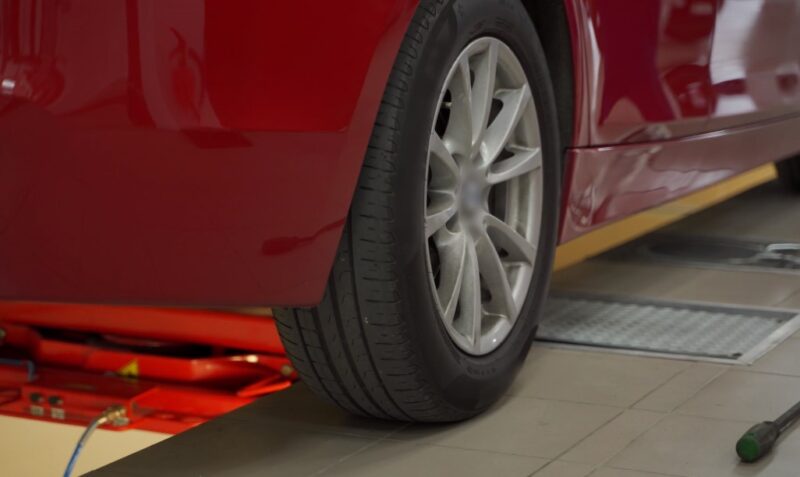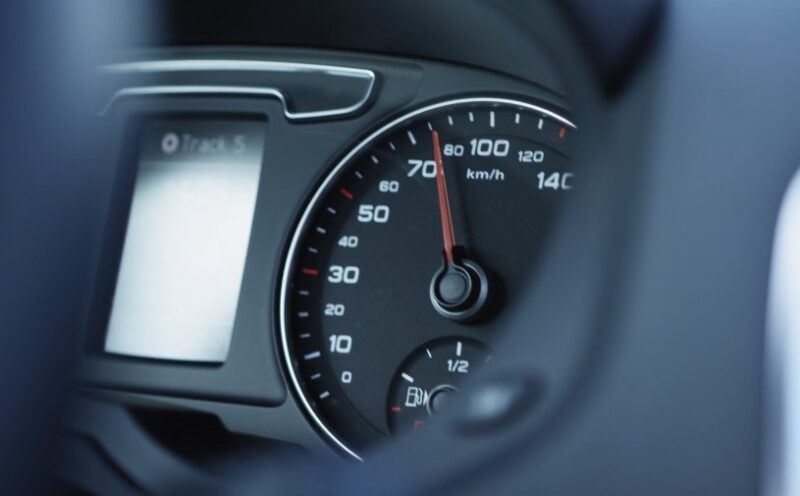Tire sizing is a crucial element when it comes to the safety and performance of your vehicle. But, for many, it’s a topic that’s often overlooked. Here are some important details that will make it easier to make the right choice.
Basics
The sidewall part is like the identity card, containing critical information about its specifications and capabilities. Understanding the markings on the sidewall is fundamental for safe and efficient driving.
When you inspect a sidewall, you’ll notice a series of numbers, letters, and symbols. These markings provide essential information about the size, load-bearing capacity, speed rating, and more.

Tire Size
The size is represented by a sequence like “205/55R16.” The first number (205) indicates the width in millimeters. The second number (55) is the aspect ratio, which is the height as a percentage of its width.
The “R” stands for radial construction, which is the most common type of tire construction today. Finally, the last number (16) denotes the diameter of the wheel in inches that the tire is designed to fit.
Load Index
The load index, expressed as a number (e.g., 91), signifies the maximum weight that a single unit can safely support. This weight capacity varies between tires, so it’s crucial to choose a load index that meets or exceeds your vehicle’s requirements.
Speed Rating
The speed rating is a letter code (e.g., H) that indicates the maximum speed at which the tire can safely operate. Different letters correspond to different speed ranges, with higher letters denoting higher speeds. For example, an “H” rating means the tire can handle speeds up to 130 mph (210 km/h).

Tire Construction
This part of the sidewall often specifies the tire’s construction type. “R” denotes radial, while “B” indicates bias-ply construction. Radial tires are the standard for most vehicles due to their superior performance and durability.
DOT Code
The Department of Transportation (DOT) code is a series of numbers and letters that certify the compliance with safety standards. It also includes information about the manufacturing date.
Additional Markings
Depending on the model, you may find other symbols or markings like “M+S” (Mud and Snow) for all-season or winter options, or “XL” (Extra Load) to signify increased load-carrying capacity.
Why Understanding The Size is Important
Now that we’ve explored the details on the sidewall, it’s essential to understand why learning more about the size is essential. That isn’t just a set of numbers and letters; it has a leading impact on various aspects of your vehicle’s performance, safety, and overall driving experience.
Performance and Handling
The dimensions affect your vehicle’s performance and handling characteristics. A larger one with a wider tread footprint can provide enhanced grip, especially during cornering and braking.
This can improve your vehicle’s overall handling, making it feel more responsive and stable on the road. On the other side, smaller models may offer a smoother and more comfortable ride, but they might sacrifice some cornering grip.
Fuel Efficiency
The size can influence your vehicle’s fuel efficiency. Larger ones can increase rolling resistance, which requires more effort from your engine to move the vehicle. This can lead to reduced fuel efficiency and lower miles per gallon (MPG). On the other hand, smaller tires with lower rolling resistance can contribute to better fuel economy.
Speedometer Accuracy

Changing the size can impact the accuracy of your vehicle’s speedometer. If you switch to significantly larger or smaller tires, the speedometer may no longer display your actual speed correctly. This can result in speeding violations or a false sense of your driving speed.
Load-Carrying Capacity
The dimensions also play a crucial role in determining the load-carrying capacity of your vehicle. Those with a higher load index can support heavier loads, making them suitable for larger vehicles or those used for hauling or towing.
Using tires with a load index that’s too low can lead to overloading, potentially causing tire damage or even a blowout.
Aesthetic Considerations
Tire size can also be a matter of personal preference and aesthetics. Some drivers prefer the look of larger, low-profile models for a sportier appearance, while others opt for smaller models for a more traditional or classic look.

The Replacement
When it comes time to replace them, understanding the size and specifications is crucial to ensure that the new ones fit your vehicle properly. Installing the wrong size can lead to issues with clearance, handling, and safety.
Making the Right Choice
Choosing the right option for your vehicle isn’t just about size and aspect ratio; it’s also about selecting ones that are suitable for your specific climate and driving conditions.
Different types are designed to provide proper performance in varying situations, such as sunny highways, icy roads or off-road adventures.
All-Season
These models are designed to provide a good balance of performance in various weather conditions. They handle well on dry and wet roads and offer decent traction in light snow. They are the default choice for many vehicles and are suitable for drivers in regions with moderate weather changes.
Summer Tires
They offer excellent traction on hot, dry roads and perform well in wet conditions. However, they are not suitable for winter driving or icy roads. Consider this product if you live in a climate with hot summers and mild winters.
Winter Tires
The main difference is that they have special rubber compounds that remain flexible in freezing temperatures, providing superior traction on snow and ice. If you encounter harsh winter conditions, including heavy snowfall and icy roads, winter are a must for your safety.
All-Terrain Tires
All-terrain tires are designed for SUVs and trucks that often venture off-road. They have aggressive tread patterns and reinforced sidewalls to handle rugged terrain. These tires are suitable for off-road enthusiasts and individuals living in rural areas with unpaved roads.
Mud-Terrain Tires
Mud-terrain tires are even more aggressive than all-terrain tires and are built for hardcore off-roading. They feature deep treads and large voids between the tread blocks to provide maximum traction in challenging off-road environments.
These tires are not ideal for daily commuting but excel in extreme off-road conditions.
Performance Tires
Performance tires are designed for sports cars and high-performance vehicles. They offer excellent grip on dry roads, precise handling, and responsive steering. However, they may have reduced performance in wet or cold conditions. Performance tires are a great choice for spirited driving on clear, dry days.
FAQs
How often should I check my tire pressure?
It’s recommended to check your tire pressure at least once a month and before long trips to ensure they’re properly inflated.
How can I determine the lifespan of my tires?
While many factors can influence tire lifespan, such as driving habits and road conditions, most manufacturers recommend replacing tires every six years, regardless of tread depth.
What is tire rotation, and why is it important?
Tire rotation involves changing the position of tires on your vehicle to ensure even wear. Regular rotation can extend the life of your tires and improve gas mileage.
What’s the difference between tubeless and tubed tires?
Tubeless tires don’t have an inner tube and are sealed to the rim, making them less prone to punctures. Tubed tires have an inner tube, which can be replaced if punctured.
The Bottom Line
While the markings and specifications on a tire’s sidewall might seem like a complex code at first glance, understanding them is crucial for making informed decisions. It is crucial for your vehicle to always choose the right model. If you are not sure, you can always consult with a local mechanic.
